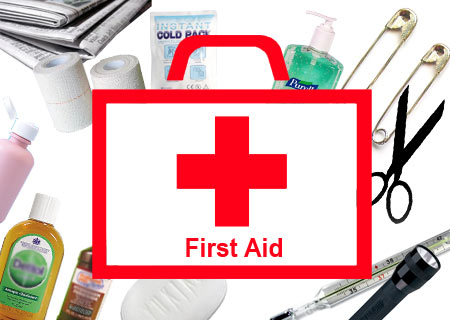Emergencies are just like guests, they always come by unexpectedly. They bring shock with them and leave a sense of relief when they go. The only difference being, in case of emergencies, you can be prepared with at least some common solutions. These solutions are called First-Aid. And these can be given by almost anyone, depending on the severity of the situation of course, till professional medical help arrives. It’s in times like these that having knowledge about basic first aid comes to the rescue, before the doctor does.
One of the most vital aspects of having a first aid kit is to have a few basic items organized systematically in an easy-to-open, large bag/box placed at an easily accessible site in the house. It is always a good idea to have a similar kit in the car especially when going for a vacation. Something like a tote bag should be good enough. It should be kept at a place which is out of the reach of children but easily accessible to adults as it contains potentially hazardous medicines.
Also it should be kept in a cool, dry, airy place away from direct sunlight. It should contain a legible list of all the contents. A list of important numbers like the family physician, a pediatrician (if the household has children), an ambulance service, the nearest hospital, the fire-brigade, the local police, a relative staying close-by who can be summoned for help is a must.
Most important are the contents of the kit. It should contain at least single pieces of the following items-
Instruments:
Dressing Materials:
Medication:
Miscellaneous Supplies:
It is vital that the manual should have been read and understood at a prior time. If there are children old enough to understand then they too should be taught how to use a first aid kit. The medications should be stocked with instructions regarding their dosage and repetition.
In case of an emergency, there is something that one needs more than anything else on earth – common sense. By use of simple logic, some of the most life-threatening emergencies can be tackled by a non-medical individual till an emergency service professional arrives. By following the under mentioned simple rules one can not only save lives but also help in a speedy recovery of the patient.
1. When unsure, ‘DO NOT TOUCH’ the injured. Much more harm can be caused than help when wrong steps are taken. It is important to help, but it is more important to know when ‘NOT’ to help.
2. Immediately call for professional help using emergency numbers. By the time you give first aid (in cases when you can), help shall arrive.
3. Victims screaming in pain and calling out for help are those who need least help as compared to those who aren’t making any sound; as they are the ones who are most seriously injured and need immediate life saving efforts. Pay attention to them first.
4. Try to move the victims away from the site of the accident with the help of more people. If not possible, try to move things of harm away from the victims.
5. In case of fainting, check whether the patient has a pulse, is breathing, and conscious. If any of the above have no as an answer then CPR is necessary.
6. In case of animal bites, wash the wound carefully with lots of soap and water. A loose bandage may be applied to the affected part. Quick medical help is a must.
7. In case of snake bites, wash with plenty of soap and water. A constructive bandage must then be applied on the heart side of the bite while keeping the patient calm. Do not keep the bandage on continuously for more than 20 minutes. Do not attempt to suck the poison out. Try to identify the snake.
8. In case of a suspected fracture, immobilize the part by placing a strong branch, ruler or a wad of newspaper as splint under the part and on joints on either side of the injury. Give firm support.
9. In case of bleeding from any site, give continuous firm pressure, directly or indirectly. Elevate the part and keep at rest.
10. In case of burns, immediately cool the area with cold water for 15 minutes. Cover with a sterile cloth. Do not try to rupture the blisters etc. Re-hydrate with oral fluids.
All in all, it is important to keep one’s wits about themselves before going ahead and handling any emergency.
Every year accidents occur leading to the loss of lives, many of which could be easily saved by knowledge of basic first aid. So, remembering the age old saying that ‘A stitch in time saves nine’, one must keep a first aid kit ready at all times and play doctor when such an opportunity presents itself.
-Dr. Rachita Narsaria

